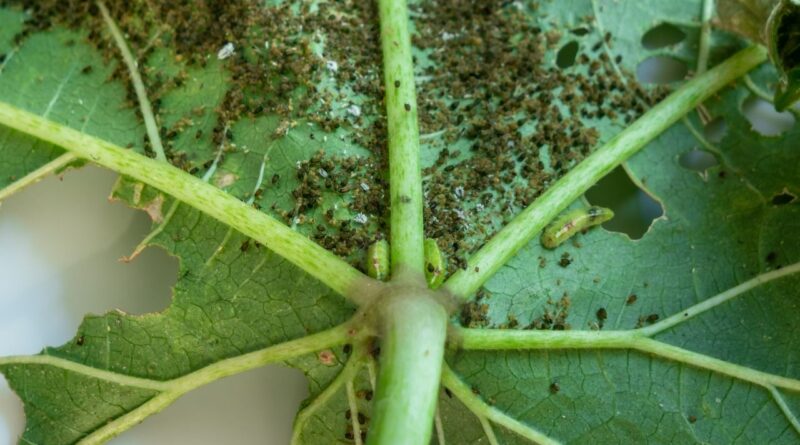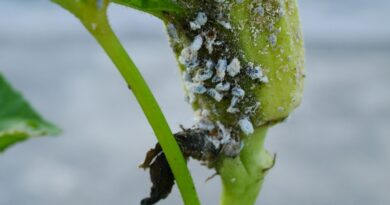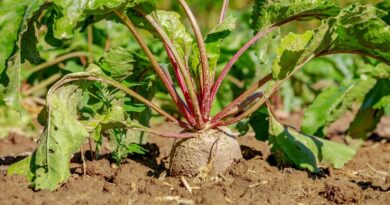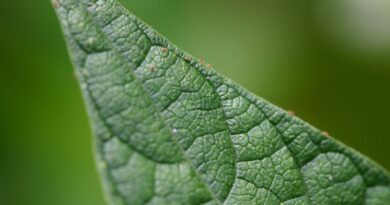A Basic Guide To Thrips
What are thrips?
Thrips are tiny, slender and elongated insects that feed on plant sap. They are also known as thunderflies or thysanoptera. Adult thrips are usually black with two pairs of feathery wings. They usually resemble tiny dark threads on plants. Their wings are folded back along the body when not in use and so are not readily visible. Thrips leap or fly away when disturbed. There are more than 6,000 species of thrips in the world. Their colours vary from yellow to brown or black. Nymphs are wingless and look smaller than adults, they tend to be light green or yellow rather than darker colours. They damage plants by sucking the sap and scraping at fruits, flowers and leaves. They are also responsible for spreading some plant viruses,fungi and bacteria. Plant injuries caused by thrips as they feed can become entry points for fungal and bacterial pathogens. Thrips attack both indoor and outdoor plants. Some species attack particular plants while others feed on many host plants. Certain thrips are beneficial predators that feed on other insects and mites. Thrips migrate actively between different hosts. Major species of thrips that attack crops in Africa include:
African bean flower thrips
Tomato thrips
Onion thrips
Cotton (Red banded) thrips
Cereal thrips
Tea thrips
Banana thrips
Black tea thrips
Coffee thrips
Citrus thrips
Cotton bud (Blossom) thrips
Western flower thrips
Lifecycle of thrips
The life cycle depends on the species of thrips and location. Thrips hatch from an egg and develop through two actively feeding larval stages and two non-feeding stages, prepupa and pupa, before becoming adults. Each female can produce up to 80 eggs, which hatch within days in warm weather or weeks to months in colder weather. Females of most plant-feeding species lay their eggs on plant surfaces or inside plant tissues. The first and second instar larvae are very small, elongated, slender and vary in colour from pale-yellow, orange or red according to the species. They have piercing-sucking mouthparts. They do not have wings. After the nymphal stages, pupation may occur on a plant or in the soil depending on species. Emerging adults fly to the plant and repeat the cycle. Under warm conditions, the life cycle takes about two to three weeks, making their population increase rapidly. Adult thrips live for about one month.
Signs of thrip damage
Thrips feeding on plants can damage leaves, fruits and flowers. Herbaceous ornamentals and certain vegetable crops are more susceptible to serious injury from thrips and thrips-vectored viruses than trees and shrubs. Thrips damage includes streaks, silvery speckling and small white patches. This happens because thrips suck out the plant cell contents. Plants might be stunted with damaged flowers and fruit. Damaged leaves can become papery and distorted and drop prematurely. Infested terminals lose their colour, roll and drop leaves prematurely. Damaged petals may exhibit pale or dark discoloration in parts where the petal tissue was killed by thrips feeding before buds opened. On fruits they cause brown to silvery roughened texture on the fruit skin. They can also deform or scar developing fruits. Another indication of attack by thrips is small black spots of faecal material on the infested parts of the plant.
Control and prevention
Preventative measures
Preventative measures should be adopted as part of the day to day garden routine because they have long-term effects compared to control measures. Combining good cultural and habitat management practises significantly reduces the chances of serious pest attacks and consequently the need to use pesticides.
- Scouting plants regularly is important to determine an appropriate control strategy. Thrips can be easily detected by shaking leaves and flowers on a white piece of paper. Pay close attention to flower buds, flowers and under leaf folds.
- New plants should be inspected for thrips before they are added to the garden. Infested plants should be discarded.
- Weeds can be alternate hosts for thrips therefore they should be cleared from the garden. Avoid planting susceptible plants next to weedy or grassland areas.
- Plants under water stress are very susceptible to thrip damage.Providing good growing conditions and proper watering for plants is a critical factor in minimising damage. Irrigation by flooding the soil has been found to reduce thrip damage by destroying a large proportion of pupae in the soil.
- A mixed cropping habitat is likely to encourage thrip predators. Natural enemies of thrips include predatory thrips, predatory mites, minute pirate bugs, ground beetles, lacewings, hoverflies and spiders. They are important in natural control of thrips.
- Coloured sticky traps, especially blue, yellow or white sticky traps, are used for monitoring adult populations of thrips. The bright colours attract and trap the trips. This helps to reduce thrip populations. Water traps can also be used the same way as the sticky traps.
- Mechanical barriers such as reflective mulches and ultraviolet absorbing plastics help to deter thrips. Reflective mulches are especially useful in protecting young plants by making it difficult for flying pests to see the plants. The mulches are also significantly effective in preventing and delaying insect-vectored viruses. However, the effectiveness of the mulch decreases with increased shading by the plant canopy as they grow bigger. The type of mulches used can range from synthetic commercial mulches, organic mulches such as straw and living mulches. Aluminium foil is also effective as a reflective mulch. In addition to repelling insects, mulches also suppress weed growth and conserve soil moisture
- Where possible, investigate the availability of resistant varieties.
Control measures
These include physical methods, using pesticides and biological pest control. Physical and biological methods are the first line of defence when it comes to controlling thrips. They are effective at low infestations. Severe infestations may require contact insecticides.
- Injured and infested parts should be pruned off and discarded. Severely infested plants can be pulled out and discarded properly.
- A strong spray of water from a hose pipe can be used to knock down thrips from the plants. This helps to reduce their numbers.
- Some natural predators of thrips can be bought and released or sprayed into gardens or greenhouses. The natural enemies such as ladybugs, lacewings and minute pirate bugs attack and destroy all stages of thrips. They are most effective at low infestations before large thrip populations have built up. Where infestation is high the population can be brought down using physical methods or other methods before releasing the beneficial insects to maintain control.
Biopesticides are ideal, as opposed to synthetic pesticides, because they have low toxicity to people, pets and pollinators and natural predators migrating in after their application. Thrips can be difficult to control effectively with pesticides partly because of their mobility, feeding behaviour and protected egg and pupal stages. Improper timing of application, failure to treat the proper plant parts and inadequate spray coverage reduce the effectiveness of pesticides. Biopesticides include plant extracts (e.g garlic and pepper extract, pyrethrum extract), insecticidal soap, neem oil, pyrethrins and Spinosad.
- A homemade botanical spray of garlic and pepper can be used to control thrips. The garlic/pepper mixture is made by chopping/blending/grinding one bulb of garlic and 6-7 hot peppers and mixing with 4 cups of water. The mixture can be left to soak overnight before the solids are strained out. The spray solution is prepared by mixing 1/4 cup of the concentrate with 2 tablespoons of organic liquid soap or vegetable oil and enough water to make 4 litres. The soap or oil helps the spray to stick to the plants and it will also act as an insecticide.
- Insecticidal soap is effective in controlling heavy thrip infestations. Mix 1 tablespoon of organic liquid soap with 1 litre of water. Apply on the infested plants thoroughly including the undersides of leaves, new growth and leaf joints. Spray every 3 to 5 days depending on the level of infestation for better efficacy. Do not use washing detergents.
- Spinosad is a microbial insecticide that is very effective in controlling thrips. This pesticide is derived from the fermentation of an Actinomyces bacterium commonly found in the soil. After application, spinosad lasts 1 week or more and moves short distances into the plant tissue to reach thrips feeding in hidden parts of the plant. Spinosad is sold under different brand names.
- Neem oil controls young nymphs, inhibits growth and development of older nymphs and reduces egg-laying by adult thrips. Neem oil works really well against scale insects because it kills both adults and nymphs. Being an oil, it also smothers the pests. Neem oil can be applied in two ways, either as a foliar spray or as soil drench which then makes it a systemic insecticide.
Neem oil soil drench
When neem oil is applied as a drench, it can last up to 22 days before needing another application. The plants will soak up the neem mixture and it will poison any pest that tries to feed on the plants. This method is very safe and effective because pollinators or other beneficial insects cannot be harmed. Use the drench when there is no rain so that the neem won’t be dispersed before being absorbed. Soil soak or drench works best on larger outdoor plants that are difficult to spray.
-Mix 1 teaspoon of the soap into 1 litre of water and stir.
– Add 2 tablespoons of neem oil to the water.
– To apply, pour a fair amount of the mixture onto the soil around the target plants. Cover a wide enough radius to feed most of the roots. About 2 to 4 cups for average size indoor/outdoor plants. More is required for trees and larger shrubs.
Neem oil foliar spray
– Fill your spray bottle halfway.
-Mix 1 teaspoon (5ml) of neem oil and 1 teaspoon (5ml) of organic liquid soap into the water.
– Fill up the bottle to the 1 litre mark.
-Shake well then spray.
-Spray the plant thoroughly, especially under the leaves and joints.
When using these biopesticides, good timing is important to avoid harming beneficial insects as most of them are broad spectrum pesticides. Spraying should be done early in the morning or late afternoon when the beneficials and pollinators are less active. In addition, spraying when the sun is hot may cause leaf scorching. Plants should always be well-watered before spraying, do not spray wilted plants to avoid damaging them. When spraying, avoid spraying flowers with pesticides. For food crops do not spray on the day of harvest. Give your plants at least 48 hours before harvesting.




